

Ronald Aguilar
Here we investigate the equation
and we are looking at the variable a which is the coefficient. First, lets graph the basic equation for a parabola,
.
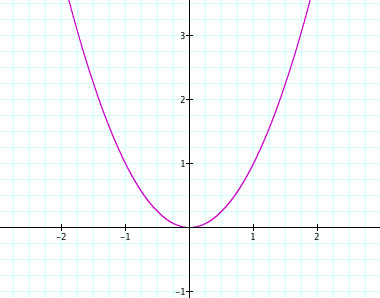
Notice how the graph looks like a U. Now that we have seen the graph for
, lets see what happens when we make 0 < a < 1 and a < 1. Here we use
(graph in blue) and
(in red).
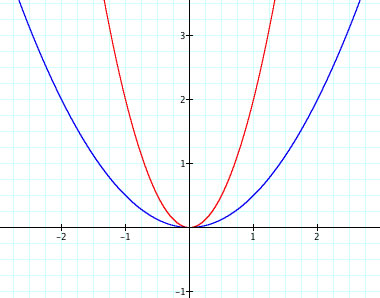
Notice how the graph of
gets wider as compared to
. If we plug in 1 for x the outcome of the function is 1/2 (y = 1/2). Since the function is even if we plug in -1 for x the outcome is the same, 1/2 (y = 1/2). The graph
grows slower than
. The graph of
gets slimmer as compared to
. If we plug in 1 for x the outcome of the function is y = 2. Since the function is even if we plug in -1 for x the outcome is the same, y = 2. The graph
grows faster than
.
After exploration of the positive coefficients of a parabola, the positive quadratic
, the positivity of the parabola reminds me of an U. This U reminds me of a smile. Lets look at the negative coefficients of the equation.
The negative quadratic
is shown below where a = -1.
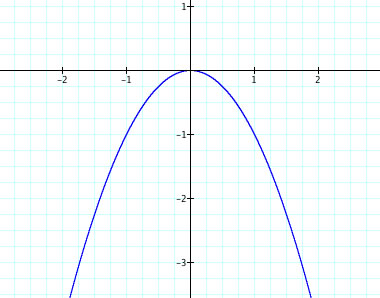
This is the graph
upside down, reflected across the x axis. Let's figure out why. Using the fucntion
, we plug in 1 for x, we get y = -1. If we look at the graph we can see that graph intersects at (1,-1). Moreover, this function is odd. Plugging in -1 for x, gives us y = -1. The graph intersects (-1,-1) too.
Change the values of a gives us a better idea for how the value of a affects the graph. Below are the graphs of
(in black) and
(in red). As we can see the graph of
is wider than the graph
. The graph of
is slimmer than the graph of
. If we plug in 1 for x in both equations as before, we can see why the graphs behave as they do.
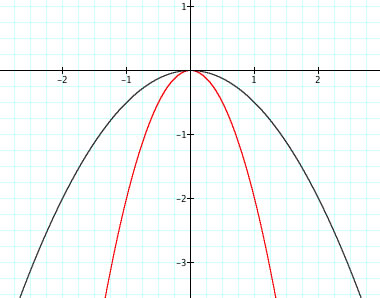
The negativity of the parabola reminds of an upside U. This upside down U reminds of a frown.
Lets explore the different variations of the coefficient a in the parabolic equation
.
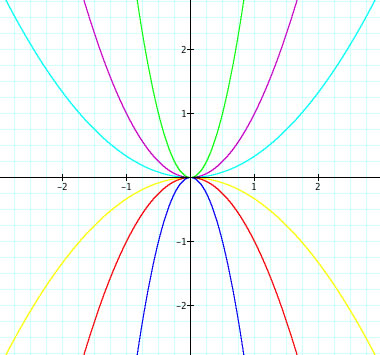
The graph of
is in purple. The negative of this equation is
. This graph is shown in red. This graph is reflected across the x axis. If we plot the points like we did before we can see why these graphs reflect each other across the x axis. The same goes for each graph here.
Changing the value a indicates how fat/thick/wide or skinny/thin/slim the parabola will be.
1)If the absolute value of a (
) is less than 1 then the parabola gets wider because the equation
grows slower.
2) If the absolute value of a (
) is greater than 1 then the parabola gets slimmer because the equation
grows faster.
So in all actuality the coefficient determines how fast the parabola grows.